Galley Certification 7 C's
Creation
Creation is understanding the various ways to create a new recipe, ingredient, vendor item, etc., in Galley. To start creating a new recipe, click the + next the Recipes header on the Recipes page. You can also create new recipes by copying and modifying existing recipes.
Consistency
It is extremely important to maintain consistency in Galley. Consistently named ingredients and recipes will help you avoid duplicates and make Galley run at maximum efficiency. Galley helps maintain consistency when adding recipe components by identifying possible duplicate ingredients (partial matches). However, when some slip through, it's important to clean the duplicates up manually.
Canonical & Custom Units
Canonical units are universally recognized (e.g. lb, g, ml, cup) while custom units are unique to your organization (e.g. slice, sprig).
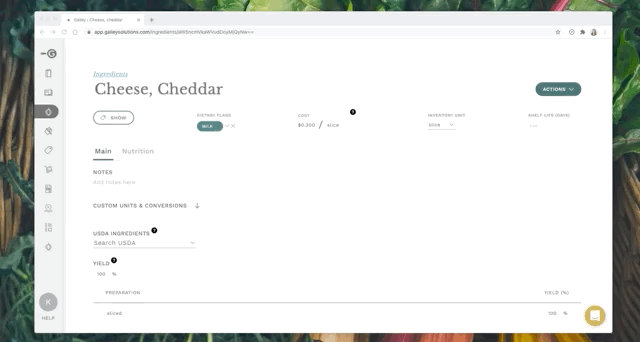
Conversions
There are two important types of conversions in Galley: 1) custom unit/each and 2) density.
When custom or 'each' units are used, you must add conversions from the custom or each units to canonical units (e.g. for cheese, 1 slice > 28 g; for an apple, 1 each > 5.5 oz).
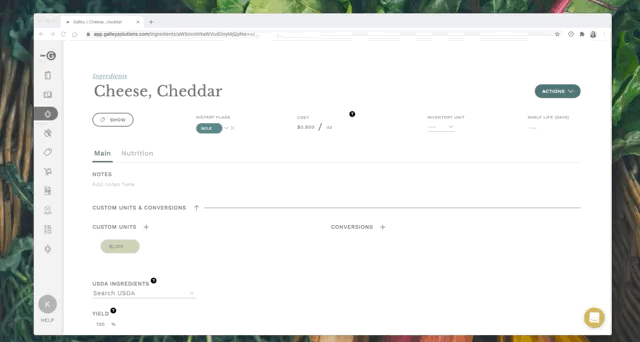
It is also important to add density conversions from units of weight to units of volume, or vice versa (e.g. for honey, 1 cup > 340 g). Density conversions can often also be added by linking the your Galley ingredient to an ingredient in the USDA database. However, the USDA database does not contain every ingredient. So, in many cases, the density information must be added like the custom unit conversion shown above.
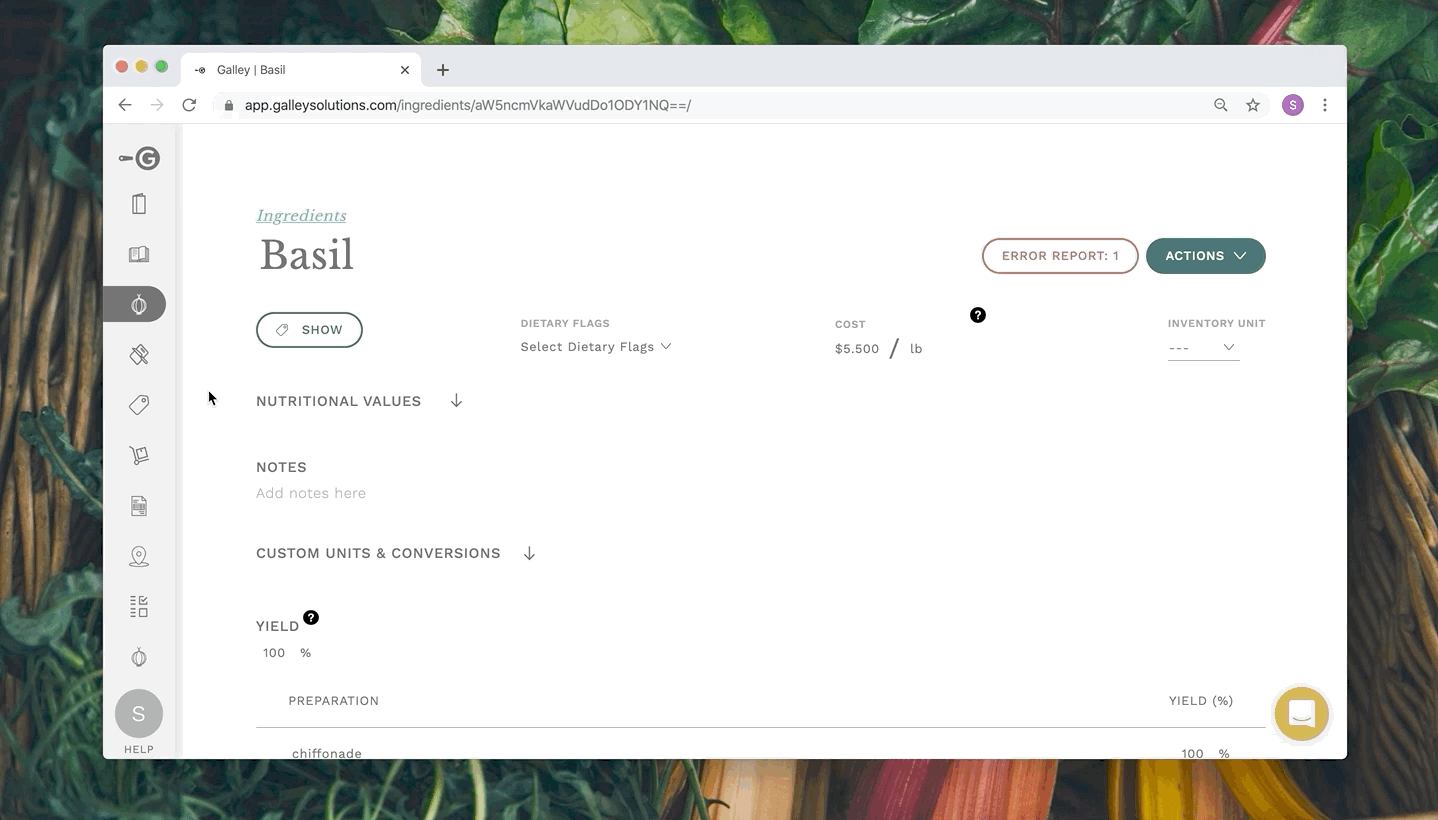
Costing
Cost ingredients by linking your vendor items to them (or by costing them at the ingredient level if you aren't using Galley's vendor item functionality). Costs will be pulled into every instance the ingredient is used, so long as required conversions (e.g., density and custom unit conversions) are present. Navigate here to read our Help Center article about how to link vendor items to ingredients.
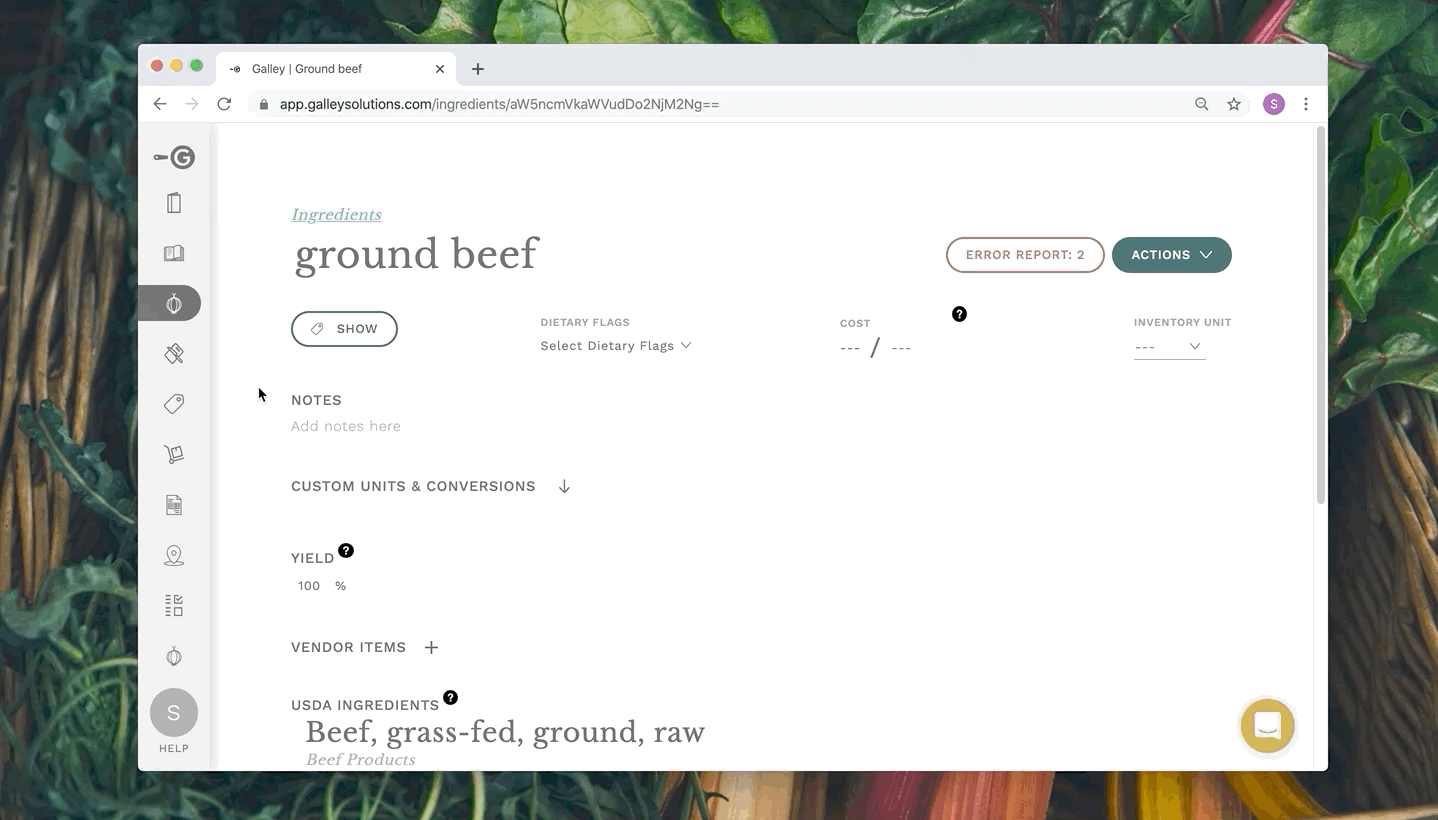
Categories
Galley allows you to tag your recipes and ingredients by any value you envision: recipe author (recipe tag), area/stage of prep (recipe tag), storage area (ingredient tag), etc. To add a category to a recipe or ingredient, click “Show” and “Add Tag”. Then, enter the name of the category and the value that you would like to apply. View the following articles to learn how to bulk tag recipes and filter by category.
Categories become incredibly valuable in Galley's more advanced workflows. If you use storage area tags at the ingredient level, you can easily break out your inventory cycle counts based on your ingredients' storage areas. If you use prep area tags at the recipe level, you can easily break out your inventory production packets based on the various prep areas in your kitchen.
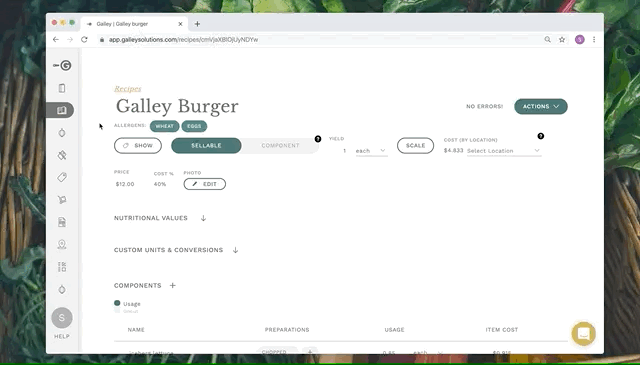
Completion
Galley account completion is defined by you: What does a complete recipe look like? Does it include recipe instructions? Complete recipe costs? What about a complete ingredient? Should you have all ingredients associated with vendor items? Allergens? Prep station categories for your recipes? Storage area categories for your ingredients?
The error reports in Galley will let you know when things like critical conversions are missing, however it is up to you and your team to add the information like the instructions and categories that you have defined internally to make your Galley account complete.
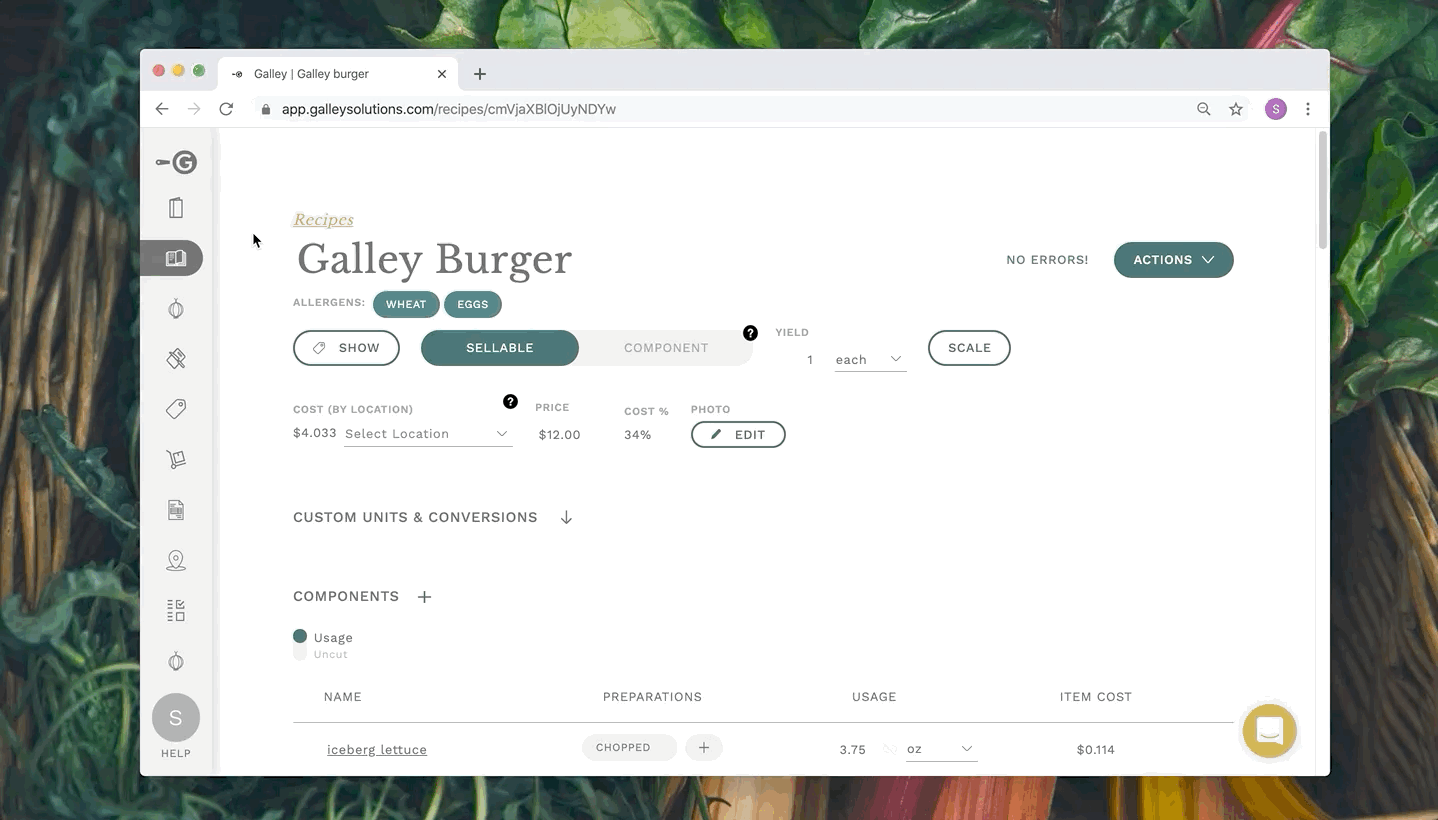
The 7 C's in Summary
The Galley 7 C's are foundational for your success in Galley. These 7 C's are the keys to unlocking Galley's more advanced workflows like inventory, purchasing, and production, especially the last 3 of the C's: Costing, Categories, and Completion.
Costing is a particularly important C for inventory and purchasing. In Galley, the recommended way to cost your ingredients is by linking them to vendor items. Once your vendor items have been linked to you ingredients, you can easily understand the value of the inventory you have on hand, and you can easily purchase for a set of ingredients that are used in recipes across a menu.
Categories are important for the inventory and production workflows. If you use storage area tags at the ingredient level, you can easily break out your inventory cycle counts based on your ingredients' storage areas. If you use prep area tags at the recipe level, you can easily break out your inventory production packets based on the various prep areas in your kitchen.
Completion is important because Galley is only as good as your data. If you've got a Pesto Linguine recipe in your account that includes a Pesto sub-recipe that is missing recipe components and instructions, when you send the production packet over to the teammate you've got on the Pesto Linguine preparation, they won't have any instructions in their production packet for how to make the Pesto!
If you're ready to move into Galley's more advanced workflows, check out Menu-based Workflows.
